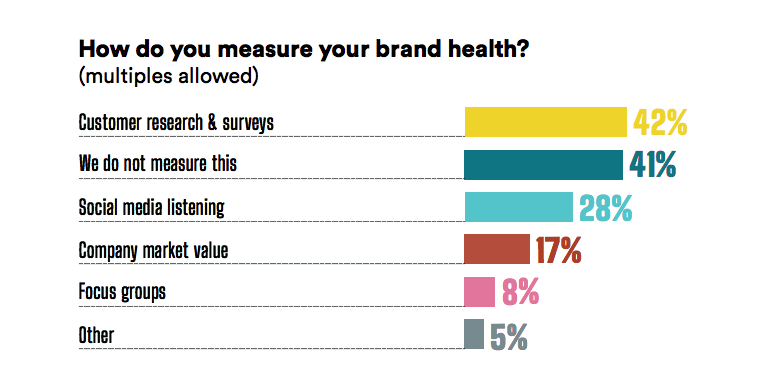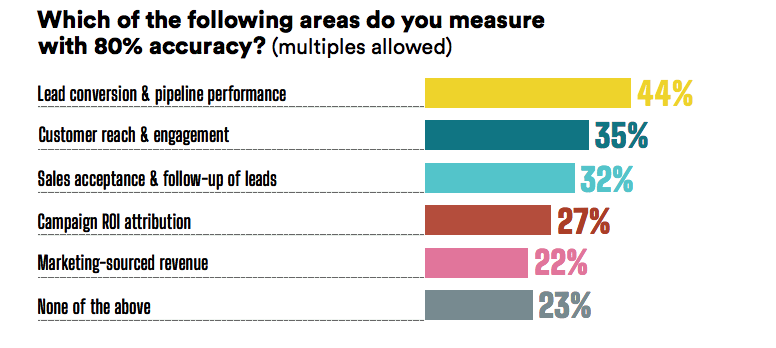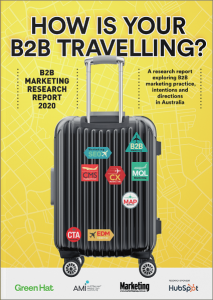Branding rises to the top of challenges for B2B marketers
Share
In its 10th anniversary edition, the annual ‘B2B Marketing Research Report 2020’ has uncovered the biggest challenges that B2B firms face and the best pathways forward for long term success. CEO of Green Hat and B2B fountain of knowledge, Andrew Haussegger, shares some of his key insights with us here at Marketing.
Insights
The annual ‘B2B Marketing Research Report 2020 offers extensive insights into business-to-business (B2B) marketing in Australia. The report uses data to identify pertinent industry trends, arming B2B marketers with the knowledge required to improve their strategies moving forward.
When it comes to objectives, the report tells us that only 26 percent of B2B firms actually achieved their marketing objectives during 2019. For this reason the report pays special attention to ‘brand’. Respondents identified that ‘growing and measuring brand awareness and brand health’ was the top challenge that they faced.
Haussegger says that this is an evolving point of interest as B2B marketers become increasingly focused on customer experience (CX). In order to optimise CX, Haussegger says brands need to be clear on “brand strategy, messaging, positioning and personality” across all channels. In a crowded market, the correlation between brand salience and CX is an important area of focus.
Despite identifying ‘brand health’ as a key challenge faced, the report reveals that a remarkably high rate of respondents (41 percent) do not measure this at all.
After 10 years of researching and reporting on B2B, Haussegger says he continuously comes back to the chasm that exists between sales and marketing, where there is also often a lack of consistency and clarity regarding the core value proposition of businesses. According to the report, only 46 percent of sales and marketing teams were strategic partners in business growth. Furthermore, only 26 percent had an agreed definition of a ‘marketing qualified lead’.
Considering that two of the top goals identified for 2020 were generating leads (79 percent) and nurturing leads (68 percent) it seems that there first needs to be some alignment between sales and marketing teams. Haussegger believes that many brands spend time looking externally (considering competitors or trying to find new markets) when the firm can grow the top line with internal improvements in lead management through the funnel.
“The number one reason leads are not followed up is because the lead passing process is ineffective,” says Haussegger.
The dissonance is partly cultural within an organisation and also a lack of education around what the opportunities for marketing in B2B are. “There is a lack of awareness and education at the C-suite as well as head of sales in a lot of these organisations about the real value that marketing can bring.”
An ongoing challenge for many B2B marketers is proving that marketing impact and ROI. Haussegger says that in-depth measurement of data and integrated marketing technology are key for demonstrating ROI. “Best-in-class firms will track and report on marketing sourced leads and marketing influenced leads – and not just leads, but revenue.”
Although there is an impetus to demonstrate the role of marketing within the B2B environment, the table below highlights that many firms are not measuring activity or performance.
An area of growth identified by the report is ‘Account-Based Marketing’ (ABM). The report defines ABM as “a strategy that focuses sales and marketing resources on personalising messaging, solutions, data and content for a specific account or set of accounts and their buying party”.
ABM appears to be in its infancy in Australia compared to the US, with only 40 percent of respondents currently doing it. Of that 40 percent, Haussegger believes that many are doing ABM in a manual sense and there is opportunity for growth. Interestingly there has been an increase in ABM delivering ROI, indicating that it could be a strategy worth investing in.
Moving forward, Haussegger predicts that there will be a shift in the investment model: “We will see more and more organisations start to invest in hyper-targeted marketing and getting a singular ‘account view’ of engagement across the account, which is core to Account-Based Marketing.” The hyper-targeting that he mentions requires an integration of technology, data, channels and content. Paramount to ABM’s success is, once again, “sales and marketing alignment” says Haussegger.
Conclusion
B2B marketing is complex with mid-long lead times and many decision makers and influencers in the buying journey. The report allows the industry to build better pathways by learning from the best-in-class B2B marketers and reflecting on data and trends.
Insights highlight how the drive for customer experience improvements is itself driving brand review and optimisation. Cultivating and maintaining brand trust has become an imperative function of B2B marketers – but first they need to understand it, communicate it and be able to measure it. Leading market research is an opportunity to reflect and ensure B2B success for the long-haul.
Download the report here.
Photo by Ross Parmly on Unsplash.



















